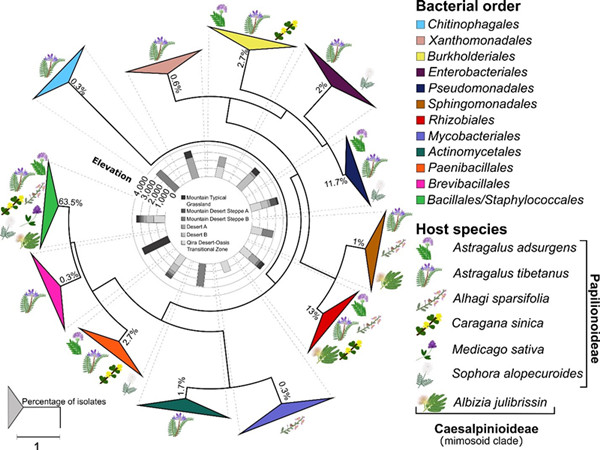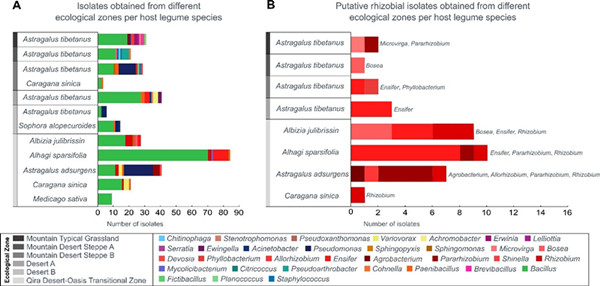Study Reveals How Root Nodule-associated Bacteria Exist along an Elevation Gradient in the Kunlun Mountains
2021-05-10
The harsh environment on the northern slope of the Kunlun Mountains means that limited plant species can survive under these conditions. However, legumes generally have a high tolerance to stress, including damage caused by wind-blown sand, and can stabilize soils and enhance soil fertility, thus becoming one of the main plant families in the region. Bacteria in root nodules of legumes play important roles in promoting plant growth.
Dr. Fanjiang Zeng's group from the Xinjiang Institute of Ecology and Geography (XIEG) of the Chinese Academy of Sciences investigated root nodule-associated bacteria isolated from leguminous plants along an elevation gradient on the northern slope of the Kunlun Mountains using a cultivation approach. In total, 300 isolates were obtained from seven legume species within six ecological zones. Isolates were identified based on 16S rRNA gene phylogenetic analysis and potential rhizobia were further identified using a recA gene phylogeny. Among the isolates, Bacillales (particularly Bacillus) were the dominant isolates from all host legumes and all elevations (63.5%), followed by Rhizobiales (13%) and Pseudomonadales (11.7%). A few elevation-specific patterns emerged within the Bacillales and Pseudomonadales. In all, Rhizobiales isolates were obtained from five different host legumes spanning the entire elevation gradient. Those from the low-elevation Qira Desert-Oasis Transition Zone (1,350-1,960 m) suggested some patterns of host preference.
The study shows that most bacteria associated with root nodules of legumes are widely distributed in distinct ecological zones within a single geographic region but suggests that both climate and host interactions may influence their distributions.
The results of the study were published in Frontiers in Microbiology, entitled "Diversity of Root Nodule-Associated Bacteria of Diverse Legumes along an Elevation Gradient in the Kunlun Mountains, China".

Fig. 1 Sampling locations and legumes sampled in the Kunlun Mountains

Fig. 2 Phylogeny of root nodule-associated bacteria

Fig. 3 Bacterial isolates belonging to each genus from each ecological zone and host legume species
Contact: LIU Jie, Xinjiang Institute of Ecology and Geography
E-mail: liujie@ms.xjb.ac.cn



